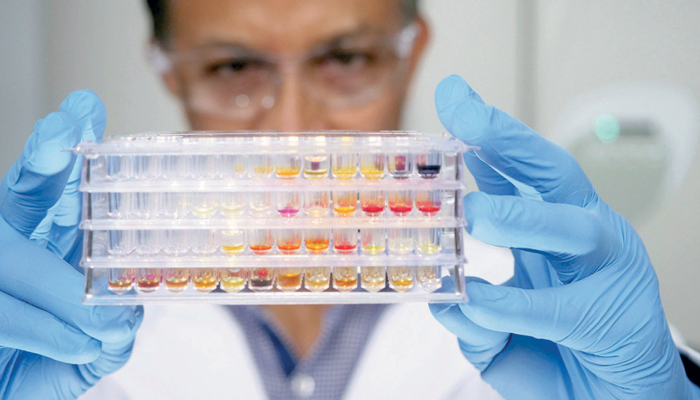
As antimicrobial resistance becomes increasingly common, a precise microbiological diagnosis – along with the determination of antimicrobial susceptibility and the minimum inhibitory concentration (MIC) for antibiotics – is fundamental to its combat.
Here we examine some of the ways in which microbiology diagnostics contribute to the timely detection and surveillance of drug-resistant pathogens, and the technology and initiatives that help us achieve that.
Microbiology diagnostics
The microbiological diagnosis, through the determination of the MIC, provides information on the susceptibility of pathogens to various antimicrobials. Likewise, the microbiological diagnosis can allow the detection of the main multi-resistant microorganisms that can be the cause of therapeutic failures and even patient’s death. This can then activate alerts for the control and exhaustive surveillance of multi-resistance strains to mitigate their spread.
Microbiology laboratories monitor the trend and evolution not only of resistance itself but also of the year-on-year increases in MIC50 and MIC90 for some antimicrobials of special interest. Without a doubt, a correct microbiological diagnosis is the starting point to establish truly effective surveillance.
Patient data analysis tools
Correct interpretation of pathogen identification or an antimicrobial sensitivity test requires basic patient data such as: where the sample was collected, previous positive samples, and more. But the data need to be selected judiciously – too much information could hinder a clinical decision.
Integrative middleware tools, such as HighFlexX, are available to enhance the microbiological diagnostic process. They can merge a wide range of data, such as patient demographic data, sample data from the laboratory information system historical archives, and ongoing samples from different diagnostic systems. The implementation of such tools can lead to improved productivity, efficient workflows, standardized processes, and a reduction in human errors.
Importantly, this connected environment enables the knowledge gained from microbial analyses to contribute seamlessly to the broader healthcare narrative. With a simple “click,” staff can obtain a visually integrated dashboard by searching for a patient name, sample number, or culture, which optimizes customer loyalty to the system.
Interconnected systems facilitate an efficient workflow in the microbiology laboratory. For example, the MicroScan products, to determine the susceptibility of antimicrobials, and mass spectrometry for bacterial identification can be integrated via HighFlexX middleware. Laboratories using this solution have reported satisfaction with its ease of use, robustness, and versatility.
Antimicrobial stewardship
Clinicians can establish effective isolation measures, and provide appropriate treatment to reduce antibiotic pressure and treat the infection. But how can society in general help with the resistance battle?
International organizations are already raising awareness about a “One Health Response” to address the issue of antimicrobial resistance. This multidisciplinary approach includes medical, veterinary, agricultural, environmental, and other relevant fields. Since the use and abuse of antimicrobials is widespread in various areas, measures need to be taken in all of them to tackle the issue of antimicrobial resistance.
To this end, it should be noted that more and more centers have established antimicrobial stewardship committees that are directly involved in projects such as “Sepsis code”, “Zero resistance”, or “PROA project”. All of them aim to achieve responsible use of antimicrobials to reduce the number of infections due to multidrug-resistant microorganisms.





